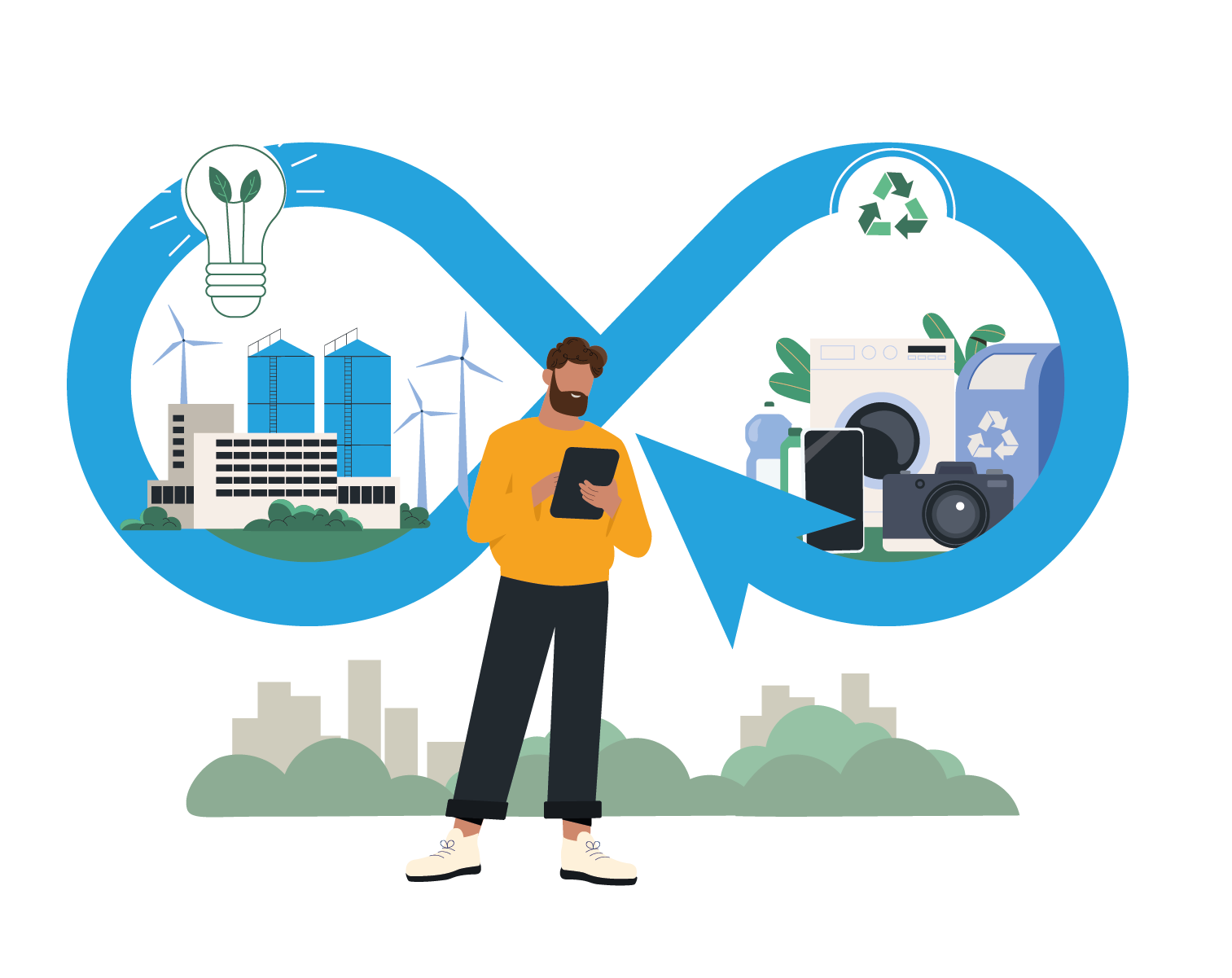What is building commissioning? A guide for smarter energy management
In today’s built environment, energy efficiency and performance are no longer optional extras – they are essential requirements for every organisation aiming to reduce costs, meet sustainability targets and create safe, comfortable spaces for people. Yet many buildings, whether newly constructed or decades old, fall short of their potential due to inefficiencies, poorly integrated systems or a lack of operational oversight. This is where building commissioning makes the difference.
Building commissioning is the structured process of verifying that a facility’s systems, from heating, ventilation and air conditioning to lighting, safety controls and energy management are designed, installed and functioning as intended.
Far from being a one-off box-ticking exercise, commissioning is an ongoing strategy that can transform how a building performs across its lifecycle. It helps owners and operators unlock significant energy savings, ensure occupant comfort, comply with regulations and extend the lifespan of critical assets.
This blog post explores the role of commissioning in modern energy management and covers the different types of commissioning, outlines the process step by step and explains why it matters for efficiency, compliance and sustainability.
Most importantly, we will discuss how commissioning fits into the bigger picture of smarter, future-ready energy strategies.
Understanding building commissioning
Definition and purpose
Building commissioning is the structured process of ensuring that a facility’s systems are designed, installed, tested and performing according to the owner’s operational requirements. At its core, building commissioning bridges the gap between design intent and real-world performance, confirming that energy systems, safety controls, ventilation and other critical building components deliver consistent results.
The purpose of commissioning is not just to tick off compliance boxes but to maximise efficiency, reliability and occupant comfort. By creating a clear, documented process from design through to operation, commissioning minimises risk and helps owners and operators achieve a higher standard of performance from the outset.
New vs. existing building commissioning
The commissioning process is not limited to new builds. For new construction, commissioning validates that the building is delivered as intended, meeting performance goals from day one. For existing buildings, commissioning helps uncover inefficiencies that develop over time, such as faulty controls, outdated equipment or poor integration between systems that lead to higher energy costs and suboptimal conditions.
In other words, commissioning is both a preventive and corrective measure: it prevents new facilities from underpesustrforming and it corrects operational drift in existing ones.
Types of building commissioning
Building commissioning is not a single, uniform process but a spectrum of approaches designed to suit different stages of a facility’s lifecycle. From the initial commissioning of new builds to retro-commissioning older properties and continuous monitoring, each type offers distinct benefits for performance, efficiency and long-term value.
Initial commissioning (Cx)
Initial commissioning is the process applied to new buildings. It begins during design and continues through construction and handover. This ensures systems such as HVAC, lighting, electrical and plumbing are properly installed, tested and aligned with the design intent.
The benefit of initial commissioning is that it sets the foundation for efficiency and performance. Without it, building owners risk higher energy consumption, frequent breakdowns and dissatisfied tenants right from the start.
Retro-commissioning (RCx)
Retro-commissioning is the application of commissioning principles to an existing facility that has never undergone the process before. Typically, retro-commissioning identifies and corrects inefficiencies that have been present since the building’s opening.
Common outcomes include reduced utility bills, extended equipment lifespan and enhanced occupant satisfaction.
Re-commissioning
Re-commissioning occurs when a building that has already been commissioned undergoes the process again. This may be triggered by a change in ownership, new operational goals or evidence of performance decline.
The key benefit is maintaining consistent standards of operation over the life of the facility. It ensures that even as usage patterns evolve, the building continues to meet both occupant needs and efficiency benchmarks.
Continuous commissioning
Continuous commissioning is the most advanced form, relying on technology and monitoring tools to provide ongoing insights into system performance. Rather than being a one-off project, it embeds commissioning into daily operations.
With continuous commissioning, anomalies can be detected in real time. For example, a poorly calibrated thermostat or a malfunctioning air handling unit can be identified and corrected before it causes significant energy waste or discomfort. This proactive approach supports long-term efficiency and ensures buildings adapt to evolving energy demands.

Cut energy waste and power long-term sustainability
Achieve your Net Zero goals faster by reducing emissions, optimising energy use and gaining real-time insight across your entire property portfolio.
The building commissioning process explained
The commissioning process follows a structured pathway that ensures every system in a building performs as designed. From early planning and design reviews through to inspections, functional testing and final reporting, each stage provides assurance that the facility will operate efficiently, safely and in line with performance expectations.
Planning and design review
Commissioning begins before a single brick is laid. During planning, the commissioning team collaborates with architects, engineers and owners to document performance requirements. These requirements serve as benchmarks for the rest of the project.
The design review phase is critical because it identifies potential issues early, such as oversizing HVAC equipment or insufficient ventilation strategies, which can be costly to fix later.
Construction phase inspections
Once construction begins, commissioning teams conduct inspections and quality checks. This stage confirms that contractors are following specifications and that systems are installed as designed. Issues such as incorrect ductwork routing or improper insulation can be flagged and corrected before the building is completed.
Functional testing
Functional testing verifies that systems work under real-world conditions. HVAC systems are tested for load performance, lighting controls are assessed for efficiency and safety systems such as fire alarms and sprinklers are evaluated for compliance.
The goal of this stage is to ensure interoperability – how well systems work together. For example, ensuring that the building management system (BMS) can communicate effectively with all subsystems.
Final documentation and reporting
At the end of the process, all results are compiled into a commissioning report. This includes test outcomes, compliance evidence and recommended maintenance procedures. The documentation serves as both a record of accountability and a roadmap for ongoing building management.
Why building commissioning matters
Building commissioning is essential for maximising a facility’s performance, efficiency and longevity. By verifying that systems operate as intended, it delivers measurable energy savings, enhances occupant comfort and safety, reduces maintenance costs and ensures compliance with regulations. Commissioning transforms buildings into reliable, sustainable and cost-effective assets.
Energy savings and operational efficiency
One of the most compelling reasons to invest in commissioning is energy efficiency. A 2023 study by Salas O’Brien indicates that retro-commissioning can reduce energy use in existing commercial buildings by an average of 15%, with a median payback period of just over one year. Efficient buildings not only cost less to run but also place less strain on infrastructure, reducing wear and extending equipment life.
Improved occupant comfort and safety
Buildings exist for people. Commissioning ensures that spaces are well-lit, thermally comfortable and safe to occupy. By calibrating systems to deliver consistent air quality, temperature control and lighting, occupants experience higher satisfaction and productivity.
Safety is equally important. Commissioning validates that life safety systems operate reliably, which is essential for both compliance and peace of mind.
Reduced lifecycle costs
By identifying and resolving inefficiencies early, commissioning reduces the likelihood of expensive repairs and premature equipment replacements. In lifecycle cost terms, the upfront investment in commissioning pays off many times over through lower maintenance costs and fewer operational disruptions.
Regulatory compliance (BREEAM, CIBSE, etc.)
Commissioning is often a prerequisite for achieving green building certifications such as BREEAM. It is also recommended under standards like CIBSE Commissioning Code M for facilities management. Compliance not only reduces regulatory risk but also enhances the building’s value by signalling commitment to quality and sustainability.
How software enhances commissioning outcomes
Modern building commissioning goes beyond manual inspections and one-off tests. Software plays an increasingly critical role in enhancing outcomes, providing real-time data, analytics and integration capabilities that make commissioning more efficient and effective. By collecting and analysing performance metrics across HVAC, lighting and safety systems, software identifies inefficiencies, predicts potential faults and ensures optimal operation. Integration with building management systems allows insights to be acted upon immediately, while dashboards and reporting tools create transparency for operators and stakeholders. Ultimately, technology transforms commissioning from a periodic exercise into a continuous, data-driven strategy that maximises energy efficiency and operational performance.
Using data and analytics for ongoing performance
Modern commissioning leverages software tools to monitor performance data continuously. Advanced analytics can identify anomalies that would otherwise go unnoticed, such as simultaneous heating and cooling or inefficient equipment cycling.
With predictive insights, building operators can make proactive adjustments, reducing both downtime and energy waste. Data also provides evidence to demonstrate compliance and report on efficiency improvements.
Integrating commissioning with building management systems (BMS)
Integration with a BMS ensures that commissioning results translate into long-term performance. For instance, if functional testing reveals an optimal ventilation setting, the BMS can automatically enforce that standard across all zones.
This creates a closed-loop system where commissioning insights are embedded into daily operations, allowing buildings to respond dynamically to changes in occupancy, weather and energy pricing.

Built for the future of facilities management
An industry proven CAFM platform to automate maintenance, ensure compliance and connect teams, contractors and assets across all sectors.
Commissioning as part of an energy strategy
The link between commissioning and sustainability goals
Commissioning is a cornerstone of any credible energy management plan. It provides the foundation for reducing consumption, cutting emissions and improving resilience.
As organisations set ambitious sustainability goals, such as achieving net zero carbon emissions, commissioning ensures that energy performance targets are realistic and achievable. It validates that strategies on paper translate into real-world outcomes.
Aligning with ESG and decarbonisation efforts
Environmental, Social and Governance (ESG) reporting is now a priority for investors and regulators. Commissioning supports ESG frameworks by delivering measurable improvements in energy efficiency, emissions reduction and occupant wellbeing.
For companies pursuing decarbonisation, commissioning helps identify opportunities to phase out inefficient equipment, optimise renewable integration and align operations with broader climate commitments.
Building commissioning is no longer optional, it is a strategic tool for achieving smarter energy management, reducing costs and meeting sustainability commitments. Whether applied to new or existing facilities, commissioning delivers tangible results: lower energy bills, improved occupant satisfaction and long-term resilience.
By combining traditional commissioning practices with software-driven insights, organisations can future-proof their buildings against rising energy demands and regulatory expectations. In short, commissioning is not just about compliance, it is about unlocking the full potential of the built environment.
Contact MRI Software
To learn more about how you can take full control over your energy consumption and costs and meet ESG and sustainability requirements, contact MRI Software today on +27 21 686 3145.
FAQs
Demystifying AI for South Africa’s property sector
Artificial intelligence (AI) is reshaping South Africa’s property sector, influencing both urban hubs and rural developments. This eBook explores eight key scenarios where AI-enabled technology is already enhancing efficiency, automation, and decisio…
